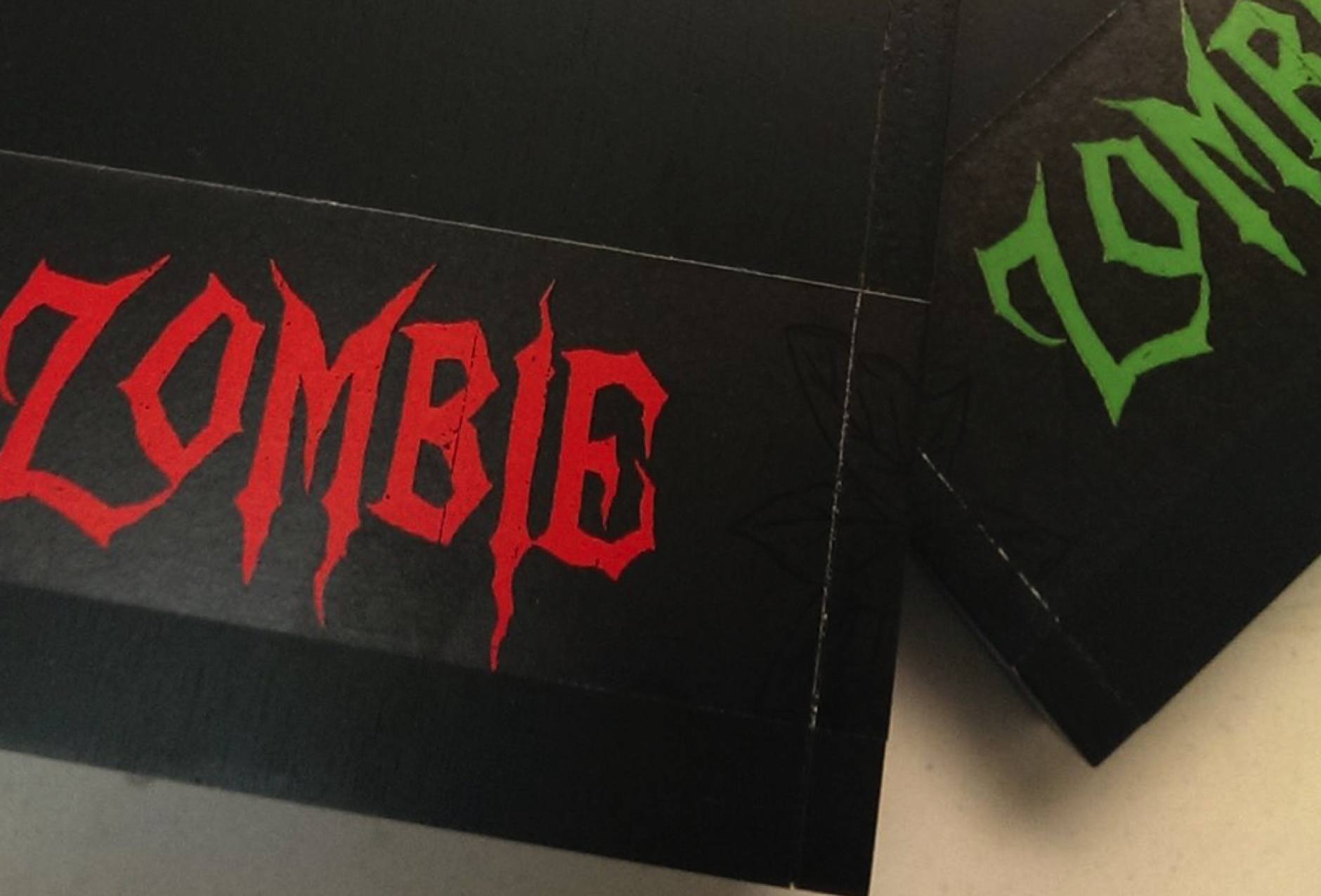Many of the reviews that appear on this site are often accompanied by a fair amount of information above the fold, as they say in the newspaper business. It usually includes some sort of a backstory, sizes, blend information and other details.
That will not be happening here, at least not when it comes to the cigar itself.
While Viaje has made a name for itself on being fairly secretive about sine of its cigars, and other than Friends & Family which gets hardly any official acknowledgment by the company, this might be the one with the least amount of details.
What we do know is that some time ago, the company made three versions of its Zombie line that were said to be originally made for China that it called the Viaje Jiangshi, or possibly Viaje Zombie Jiangshi. Like what has been in American retailers, it has the Zombie wordmark on the band, though it added a black version in addition to the red or green on the band that has appeared in the U.S. In the case of this black version, there were 88 boxes of 20 cigars produced, a total of 1,760 cigars.
However, it ended up being for sale at an American retailer, Anthony’s Cigar Emporium, which has locations in Tucson and Phoenix and who refers to it as the Zombie China Black and says that it is only available through them.
Additionally, it appears to be a new size for the Zombie line, measuring 5 1/2 inches long with a 52 ring gauge, making it half an inch longer than the current Zombie offerings with which it shares the tapered foot shape.
The name Jiangshi is a fitting one, as it is the word for what is described as a hopping vampire or hopping zombie in Chinese culture.
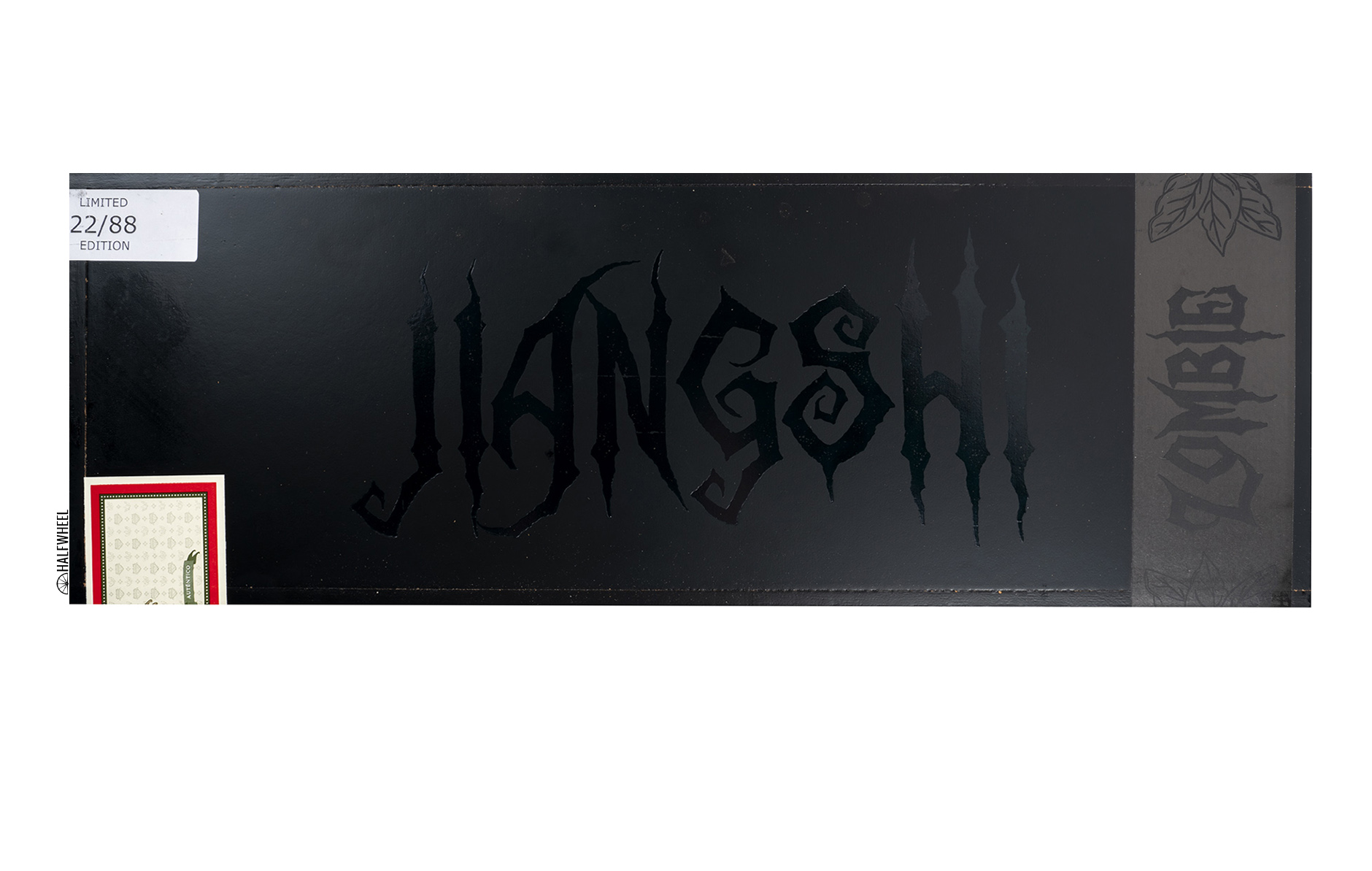

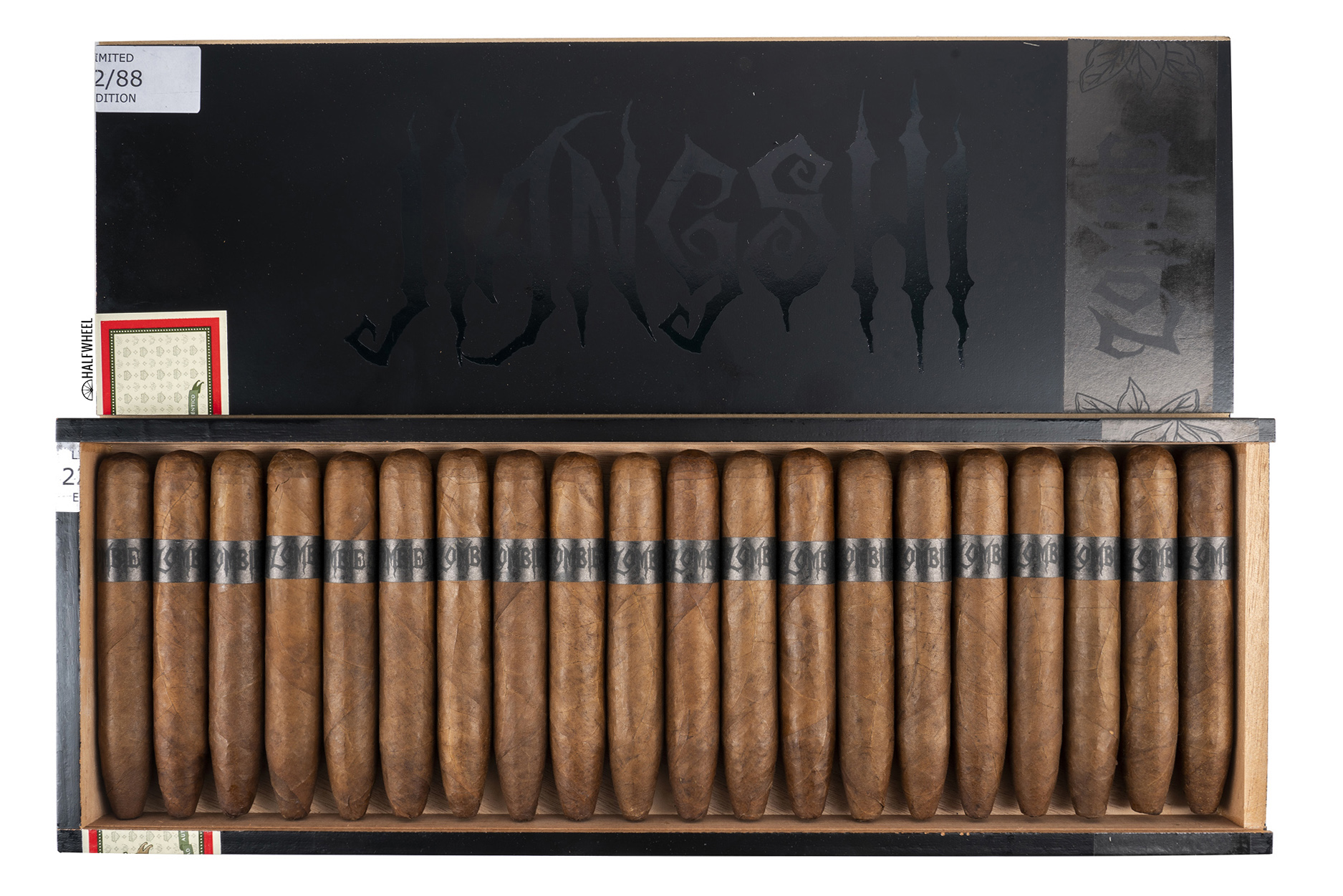
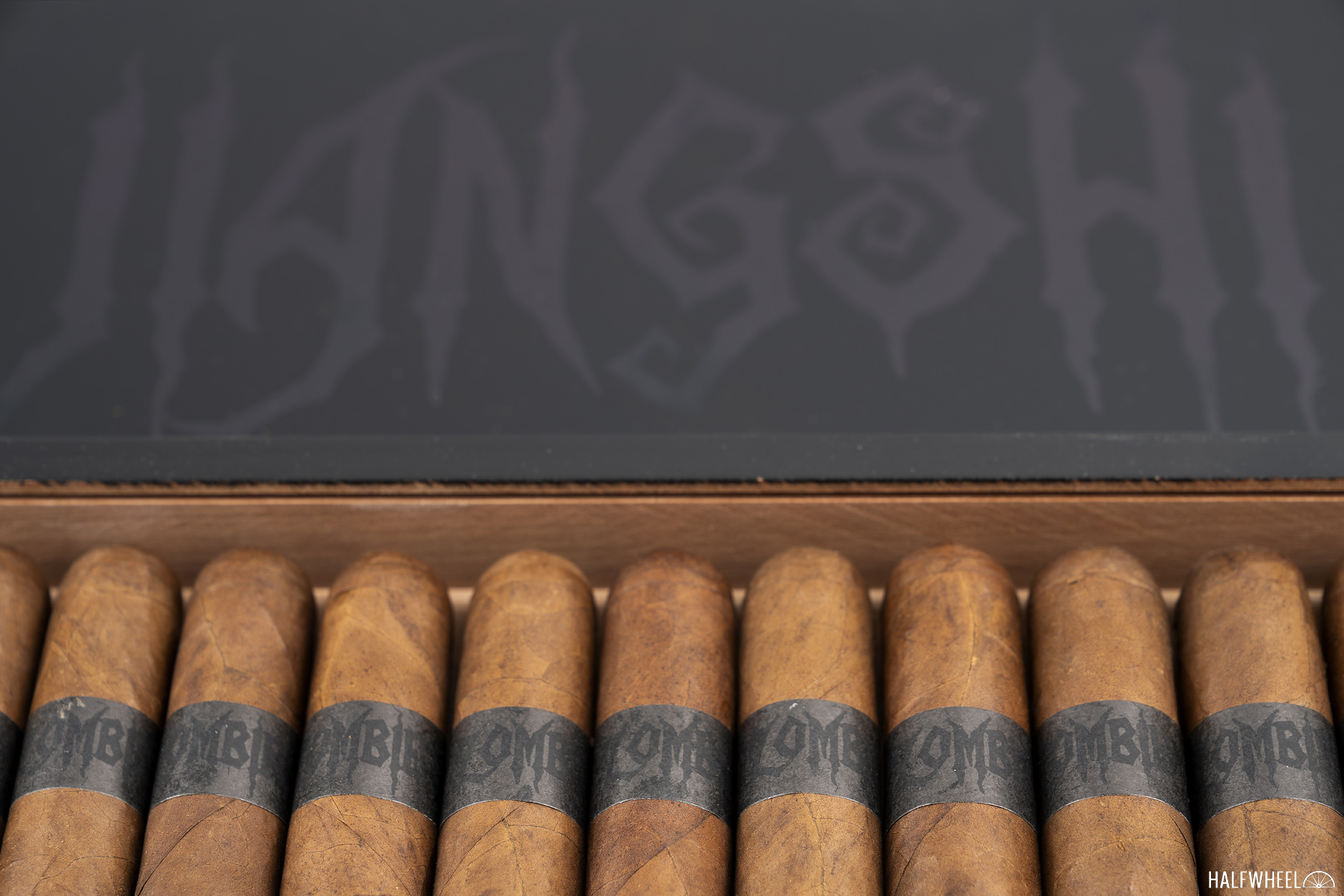
The Zombie line debuted in 2011 as an exclusive to Tobacco Grove and BURN Premium in the Minneapolis, Minn. area, with the name coming from the implication that the company’s MOAB and WMD lines were so strong that they imparted a zombie-like effect on those who smoke them.
“The name comes from peoples transformation into Zombies after being exposed to radiation from the WMD release,” Farkas said around the time of the cigar’s debut.
That original release was a Nicaraguan puro that came in a uniquely dressed 4 3/4 x 52 robusto that was triple-capped at the foot just like it was at the head. Since then it has expanded into a few offshoots, notably a red banded version that featured a maduro wrapper, while the green uses a criollo leaf. As noted above, the size has also changed to become a 5 x 52 perfecto with the foot left open, a change made with the 2013 edition.
Along the way the Zombie line merged with the company’s Super Shot line in 2013 for the Zombie Super Shot, then the Zombie Antidote was released in 2014 as “the ‘cure’ for those who have smoked too many Zombies.” In 2016 there was the Zombie Biohazard Red and Zombie Biohazard Green, the first box-pressed releases in the series.
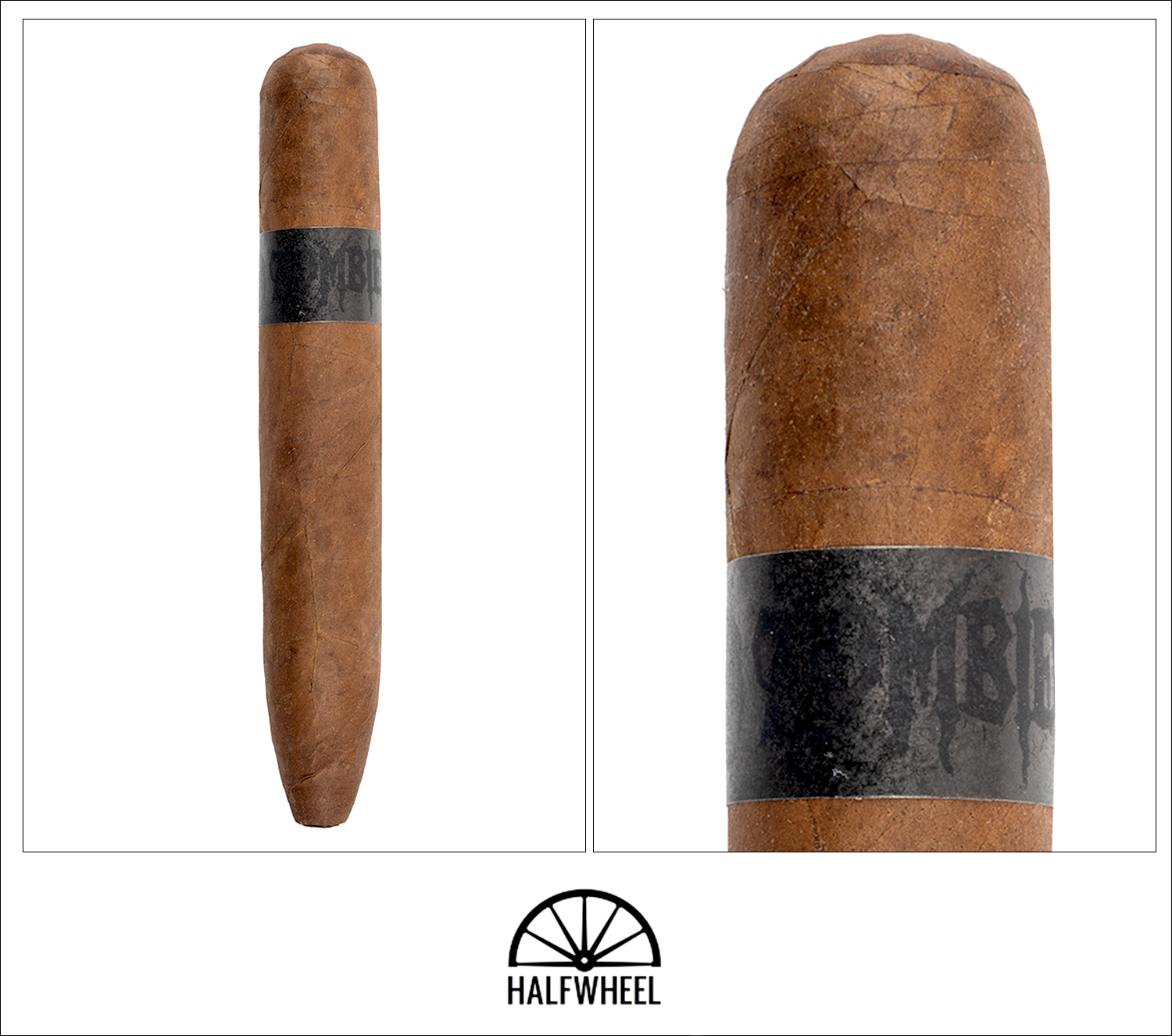
- Cigar Reviewed: Viaje Zombie Jiangshi Black
- Country of Origin: Undisclosed
- Factory: Undisclosed
- Wrapper: Undisclosed
- Binder: Undisclosed
- Filler: Undisclosed
- Length: 5 1/2 Inches
- Ring Gauge: 52
- Vitola: Perfecto
- Est. Price: $23.25 (Box of 20, $465)
- Release Date: Undisclosed
- Number of Cigars Released: 88 Boxes of 20 Cigars (1,760 Total Cigars)
- Number of Cigars Smoked For Review: 3
If there’s something that gives an indication what this cigar is, it’s the shape; a 5 1/2 x 52 figurado with a tapered foot that reminds me a bit of a railroad spike, or if nothing less an inverted torpedo. The band is only of help when more closely inspected, as the black Zombie text blends into the black blackground until some light is shown on it or you hold it a few inches from your eyes. What’s most interesting is the wrapper, a matte finish that seems lighter in color and much less vibrant than what I think of from the Zombie line or Viaje’s releases in general. There’s some mottling on one sample that’s most profound effect is making the seam lines very visible, though another sample’s are nearly invisible. Veins are small and there’s not much in the way of tooth, while the fingers get a very smooth, slightly oily texture. It’s a fairly firmly rolled cigar with a bit of give in spots, and strictly from a visible standpoint, the cigar looks pretty much flawless. The small opening at the foot limits how much of a prelight aroma can be picked up, and what I get is an oily peanut smell with no sweetness or pepper. The cold draw is very tight, even though I clipped off a bit more of the cap than I would have preferred, though the closed foot it almost certainly restricting airflow. In the case of the final sample I smoked, I don’t think I am able to get any air moving. Flavors here are mild and neutral as well, with peanut and peanut butter the most consistent, a bit of baking spice the most sporadic.
While I was pretty concerned about the draws, once the Viaje Zombie Jiangshi Black gets burning and around the tapered foot, it opens up very well and draws much easier. It has some variance in how it starts; the first and third samples are a much lighter profile than I expect from Viaje, starting out with very light woods and an oolong tea note that is also light but a bit toasty. The second is more familiar, with black pepper and a bit of smoky char, but also hints of creaminess. What is lacking in each sample is a heavier, earthy note, as well as the upfront pepper that provides some punch. There is a bit of black pepper through the nose, but the flavor and aroma are pretty much hand-in-hand through the first 10 minutes of smoking. White pepper begins to enter the profile as the peanut evolves into dry peanut butter, yet there’s still some oiliness to the smoke. The technical performance is very good with plenty of smoke and an even burn line. I’d put the profile at medium in terms of intensity, while strength is medium-minus, definitely milder than my thoughts of what a typical Viaje holds. It’s also quite balanced, good enough that it merits mentioning.
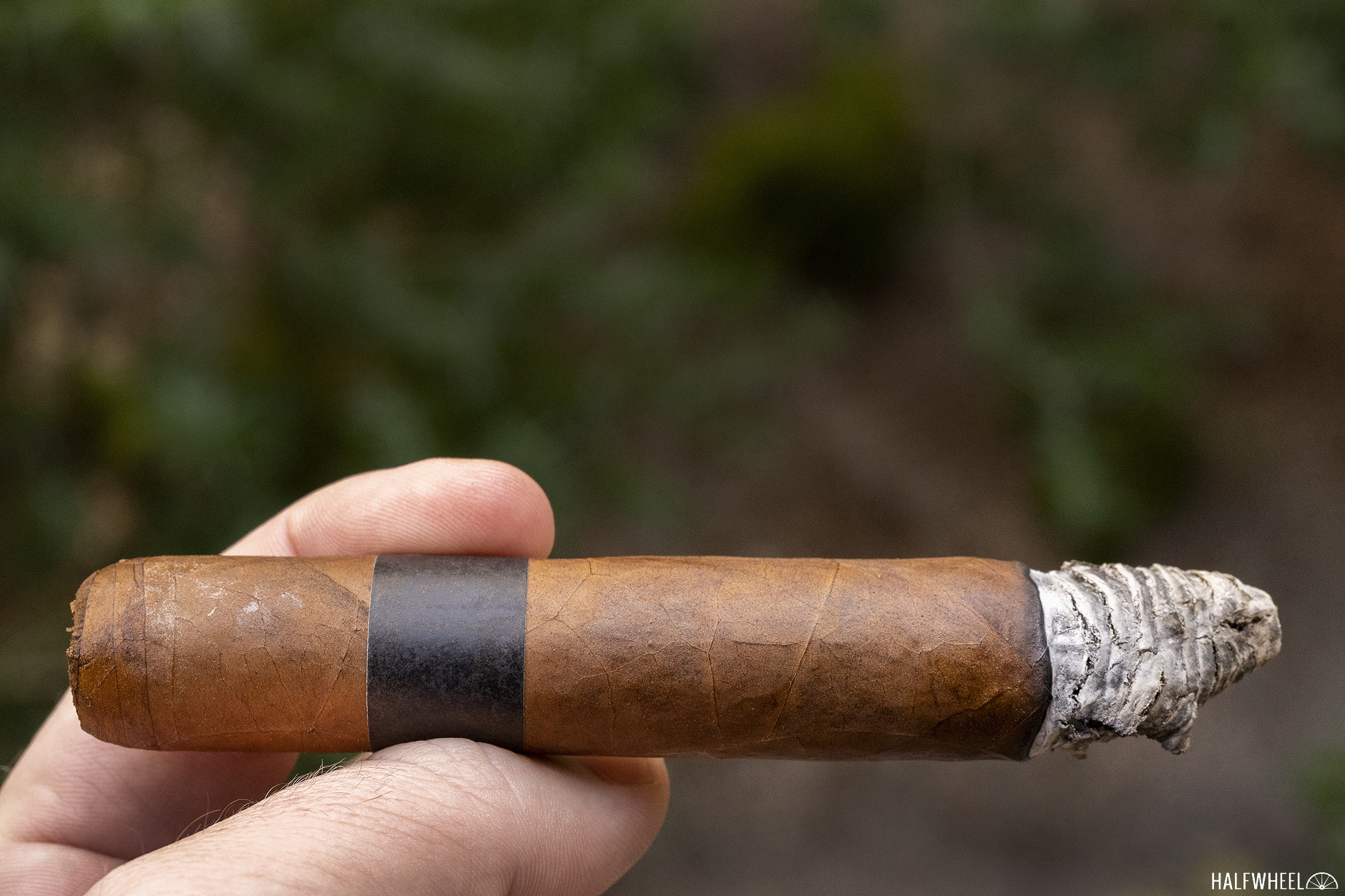
The tea note continues to be the one that my palate latches onto, even with the familiarity of the peanut and peanut butter plenty present. When it manages to make its way into the retrohale, it’s an even better result for the cigar, as it’s not only an enjoyable sensation but also a rather unique one, at least among what I’ve been smoking lately. It begins to fade into a more familiar dry wood note, offering a bit of cedar at first before taking on a lumberyard 2×4 kind of sensation. Once I knock the ash off around the midpoint, the flavor profile undergoes its most drastic change yet, nothing major but definitely noticeable as the tea is completely gone and the wood shifts into notes of soft white bread or crackers, some with the buttery sweetness that I remember from Ritz, others with a more wheat-forward flavors of Triscuit, complete with that slight bite I get from those snacks. There’s also some light white pepper to be found, but it is a far cry from the heavier pepper note that is found in other Zombie releases. That profile takes the cigar into the final third, with the technical performance still very good; the burn line isn’t perfectly even but it’s not off enough to warrant reaching for the lighter, while the draw and smoke production are great. The flavor intensity and strength both sit around the medium mark as the cigar begins to leave a bit more of a tingle as part of the finish.
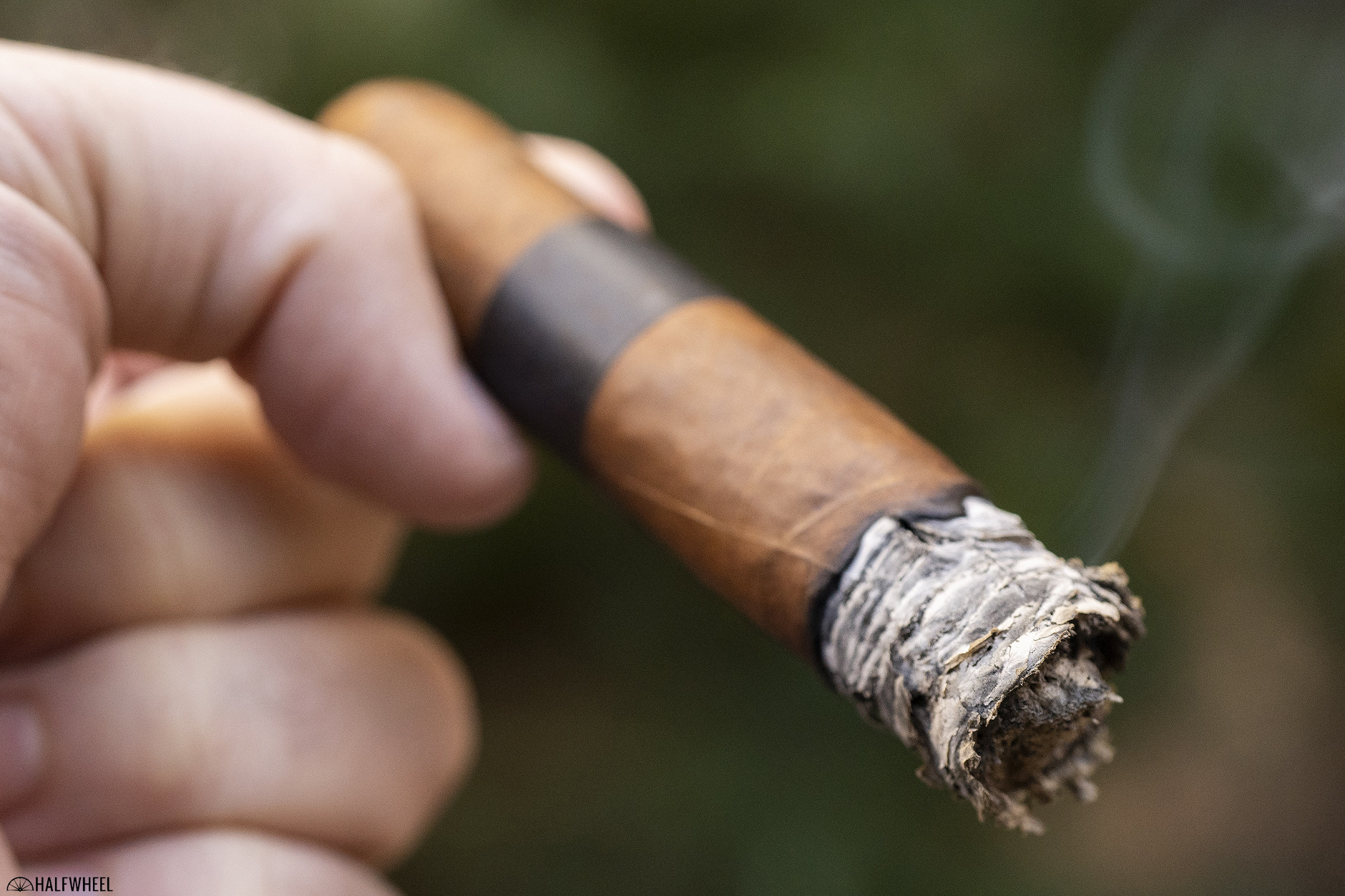
As the Viaje Zombie Jiangshi Black gets into its final third, the flavors continue to diminish in intensity, yet the smoke takes on a bigger mouthfeel. It’s steadily becoming smokier, even though it has lost the more delicate and, frankly, more interesting notes that were prevalent in the first third and persisted through most of the second third. That said, the final third becomes a bit more familiar in terms of the general cigar profile. There’s pizza dough, just a bit of pepper, and at times a bit of very subtle wood that is an accent more than a core flavor. Retrohales manage to squeeze a bit more pepper out of the smoke, and while it’s not an overly intense sensation, it does linger in the nostrils and imparts a building tingle. The technical performance continues to be very good all the way to the very end of the cigar, though there does seem to be some combustion issues once the burn line hits where the band would be. A quick relight gets things back on track, but I did find it odd to be a consistent experience. I’m now left to hope that the flavors from the first third could return even for a puff or two, as it would be a welcomed event that would have me smoking the cigar down to the cap in hopes of finding one more hit of them. One sample delivers a bit more of the dry tea aroma, though it now pairs with a dry woodiness that isn’t quite as enjoyable as the first experience, but it manages to scratch the itch more than the other two samples, where I didn’t get the flavors again. Either way, I’m still more than satisfied by the profile when I put the cigar down with just under an inch left.

Final Notes
- Like Chinese-market releases from other companies, Viaje uses the number eight—specifically that this is limited to 88 boxes—which is a lucky number in China.
- The first thought I had upon putting the first sample down was that this wasn’t what I was expecting from either Viaje or a cigar wearing a Zombie band. If you seek these out—as they are still available as of this writing—be prepared for a different profile than the typical Zombie blend. I won’t go so far as to say that it’s a Zombie Connecticut, but it is definitely lighter, which I rather like.
- I’ve read suggestions that this was made to compete with Cuban cigars, which do well in the Chinese market, though I can’t say that I picked up anything that had me thinking this was particularly Cuban-esque.
- If I had to make a decision whether or not to smoke this cigar based solely on the cold draw, it would probably be a no, other than the fact that I rarely say no to a cigar for such a reason.
- That said, the change in airflow that occurs about 10 minutes after lighting is dramatic and gets things into a nearly perfect place.
- The balance on this cigar is quite impressive, possibly one of the most balanced Viaje releases I have ever smoked.
- Similarly, the technical performance is nearly perfect.
- Whenever I think of the Zombie line, I’m reminded of when I drove down to Tucson to pick up a box of the 2012 edition, which added a pinhole to the foot of the cigar in an attempt to help the cigars better release the excess moisture from the rolling process.
- There was no chance the Zombie wordmark on the band was going to show up in the photos, but it’s there.
- There is a bit of a nicotine buzz to be felt from the Viaje Zombie Jiangshi Black, but it does feel toned down from that of the other Zombie releases I have smoked.
- If you have any suggestions of rare cigars you’d like to see reviewed in future Holy Grail Week reviews, let us know by leaving a comment. We are always looking for rare and interesting cigars like this, particularly cigars that aren’t from Arturo Fuente, Davidoff or Habanos S.A.
- The cigars for this review were purchased by halfwheel.
- Final smoking time was two hours on average.
If you read the notes above, you should have gotten the point pretty clearly that this is not your typical Zombie, and it's a point I will reiterate again once more. It's lighter with few if any of the typical notes I think of with the Zombie blend, and I have to say, this blend works incredibly well. I was almost shaking my head in disbelief when I got the tea notes in the first third of the first sample, but sure enough they work well and are a great starting point from which the blend evolves into a blend that not only is incredibly enjoyable but expands my thoughts of what those involved with the blend are capable of creating. I'd love to see this as a stateside release and an addition to the Zombie series, though I must admit that it is different enough from the other Zombie releases that I wonder if it could be embraced as a true Zombie by fans of the line. Regardless, it is a fantastic cigar and one I was glad ended up on my to-smoke list for Holy Grail Week.


